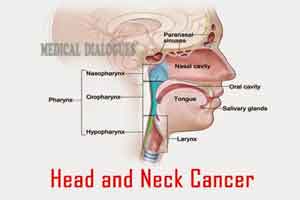- Home
- Editorial
- News
- Practice Guidelines
- Anesthesiology Guidelines
- Cancer Guidelines
- Cardiac Sciences Guidelines
- Critical Care Guidelines
- Dentistry Guidelines
- Dermatology Guidelines
- Diabetes and Endo Guidelines
- Diagnostics Guidelines
- ENT Guidelines
- Featured Practice Guidelines
- Gastroenterology Guidelines
- Geriatrics Guidelines
- Medicine Guidelines
- Nephrology Guidelines
- Neurosciences Guidelines
- Obs and Gynae Guidelines
- Ophthalmology Guidelines
- Orthopaedics Guidelines
- Paediatrics Guidelines
- Psychiatry Guidelines
- Pulmonology Guidelines
- Radiology Guidelines
- Surgery Guidelines
- Urology Guidelines
Early detection of head and neck cancers is the foremost path of cure

Dr. Sushen H. Bhat and colleagues conducted a study Novel Program of Using Village Health Workers in Early Detection and Awareness of Head and Neck Cancers. The study has been published in Indian Journal of Otolaryngology and Head & Neck Surgery.
Head and neck cancers together (oral cavity, pharynx and larynx) are sixth commonest worldwide and are the commonest cancers in developing countries. The Cancer Project was started in Kheda/Anand, Gujarat, a harvest land of tobacco. The objective of this programme was to indoctrinate the most vulnerable and the least tended upon; the basics of head and neck cancers via the medium of their own kins. Voluntary village health workers were educated and trained to pick up the early signs of head and neck cancers. Oral self-examination was taught to them and they went to peripheral villages to screen the population. They would refer suspicious cases to tertiary healthcare centre. The population was enlightened upon the basics of preventable measures, treatment options and rehabilitation facilities for head and neck cancer patients. Knowledge, attitude and practice analysis was done in the population which showed widespread disbelief and false practices. A population of 26,10,432 was surveyed in 1862 villages of which 10,522 (1.1%) individuals successfully quit the habit. The minimally educated workers referred 3309 suspicious individuals to higher centre of which 1890 (57.11%) tested positive for cancer. A lot of resource is put in research and development of rapid diagnosis and complete cure; however such a minimally costing program may help the most in the primordial, primary and secondary level of prevention. Such programs should be advocated on the global platform on lines of Breast Self Examination.

Disclaimer: This site is primarily intended for healthcare professionals. Any content/information on this website does not replace the advice of medical and/or health professionals and should not be construed as medical/diagnostic advice/endorsement or prescription. Use of this site is subject to our terms of use, privacy policy, advertisement policy. © 2020 Minerva Medical Treatment Pvt Ltd